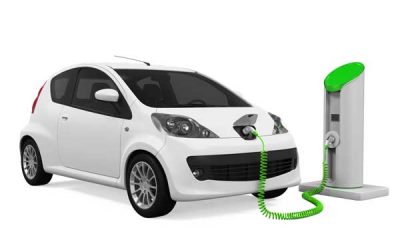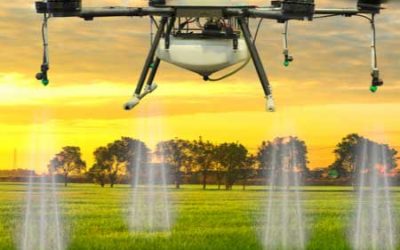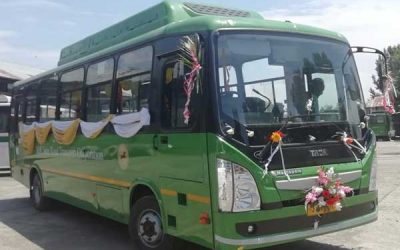The COVID-19 pandemic – and the unprecedented lockdowns that followed soon after – dramatically changed the way of working for all enterprises. Before COVID-19, many enterprises were halfhearted to adopt the work-from-home concept, even on a trial basis. However, due to the pandemic, they quickly modernized their processes and fortified cybersecurity focus to deliver an effective remote-work environment.
While 2020 has been a year of adjustment to the crisis, 2021 will be a year of more robust digital transformation initiatives to expand the remote workforce capabilities and strengthen corporate resilience. This unparalleled workplace transition also requires businesses to build newer strategies to protect employees’ networks by augmenting their cybersecurity architectures.
In a recent report titled McAfee Threats Report: November 2020, Cybersecurity firm McAffe observed the rise of an average of 419 new threats per minute in the second quarter of 2020, with an astounding 11.5 percent growth of new malware samples.
A tough year from a cybersecurity focus standpoint
During 2020, cybercriminals adopted a range of diverse tactics to target network vulnerabilities and found new opportunities to launch attacks. Companies have witnessed a massive rise in targeted ransomware attacks, large-scale DDoS (distributed denial-of-service) attacks, and malware spread throughout the year.
From the Twitter Bitcoin hack to the temporary halting of the New Zealand stock exchange (NZX), the year impacted diverse industries in a colossal way. In March 2020, hospitality major Marriott International stunned everyone by acknowledging a major hacking incident on its information networks, revealing 5.2 million guests’ data.
The year saw many cybercrime campaigns being launched with pandemic themes of Covid-19 in a bid to exploit the rising remote workforce. Phishing and malware-driven intrusion has drifted away from the organizational network to end-user devices in the distributed workspace environment. Even with the best of breed tools and resources, many big companies could not predict cybersecurity attacks’ patterns.
Another growing concern is the emergence of deepfakes, where sophisticated technologies such as artificial intelligence are exploited to manipulate audio-visual content, such as cloning the voices of influential people to commit financial crimes. A notable example that made headlines during 2020 was Belgium’s deepfake video release showing Belgium’s prime minister speaking of a pressing need to handle the economic and climate crises. The speech was considered real by many viewers.
Many industry observers have warned that fraudsters could leverage such technologies in the future to bypass voice-recognition systems and access critical data.
New strategies for dealing with emerging threats
Most IT security and data management specialists have been showing concerns around the rising sophistication of attacks and the complex cybersecurity landscape. There is no crystal ball to accurately forecast the IT Security landscape. However, the year 2021 will see enterprises making substantial efforts to deploy real-time solutions that can immediately detect and halt anomalies and suspicious behaviors. (See: Top enterprise cybersecurity trends of 2020).
According to Sophos, a global cybersecurity solutions provider, by 2021 industry could witness more sophisticated cybersecurity attacks, targeting larger organizations with multimillion-dollar ransom demands.
Cybersecurity Ventures, another global security solutions firm, projects that Ransomware attacks will continue to accelerate. And businesses in 2021 will suffer one ransomware attack every 11 seconds. It also predicts that the cost of ransomware to businesses will reach $20 billion and that global damages from cybercrime will reach $6 trillion in 2021.
This emerging threat landscape will push organizations to focus on disruptive technologies and solutions to get real-time security assessments across various endpoints, irrespective of employees’ location or network (See: Combating cyber threats in the new normal).
In the year 2021, a considerable cybersecurity focus will be on reviewing the IT security areas that are too expensive to implement. While risk parameters and the likelihood of data breaches are steadily increasing, organizations would also need to keep financial viability in mind and focus on solutions that could give them a better return on investment.
With the expansion of IoT connected devices shortly, networks will be more vulnerable to large-scale multi-vector cyberattacks. In the second half of 2021, organizations’ cybersecurity focus is likely to revolve around fast-tracking their deployment efforts around advanced solutions to protect their networks and clouds and enhance security controls.
Going ahead, CISOs are expected to focus on technologies that could drive the adoption of secure cloud solutions, align technologies closely with business objectives that can foster innovation and growth (See: Here’s how the new Cyber Security Policy could reshape CISO roles).
There will be a continuous focus on remote monitoring capabilities, automation, and zero-trust models for robust user access patterns (See: CIOs to focus on network transformation for business continuity).















0 Comments